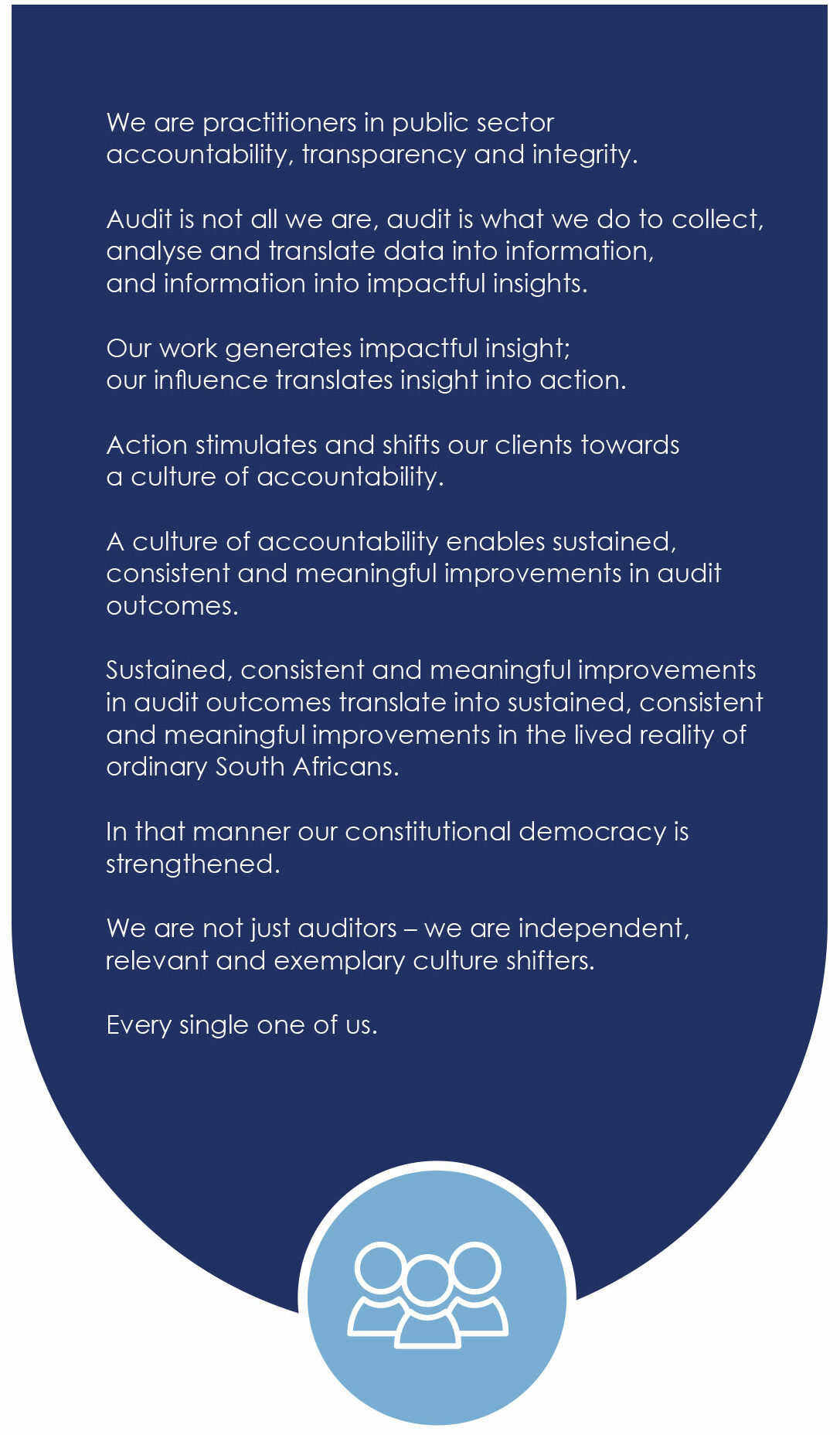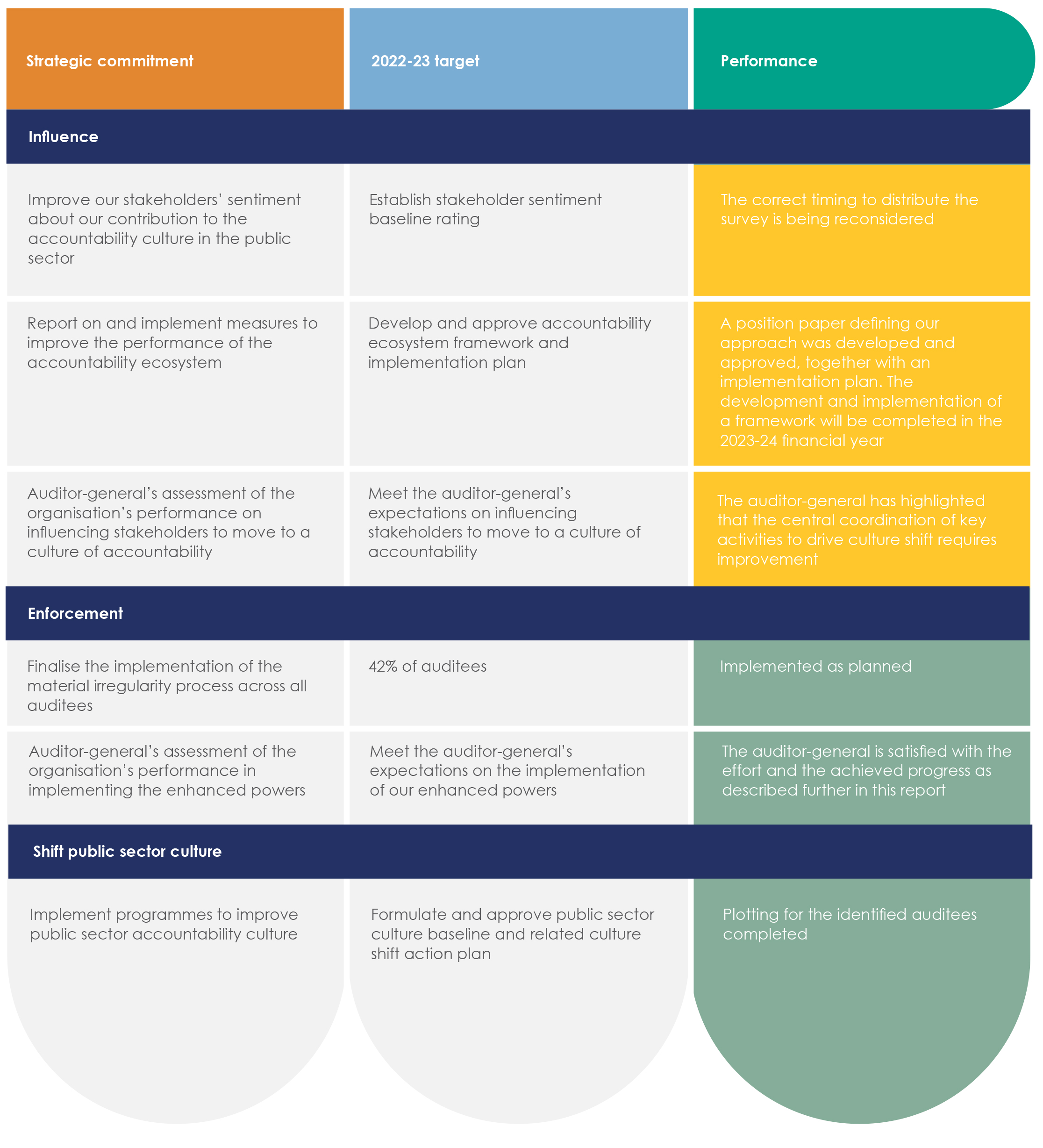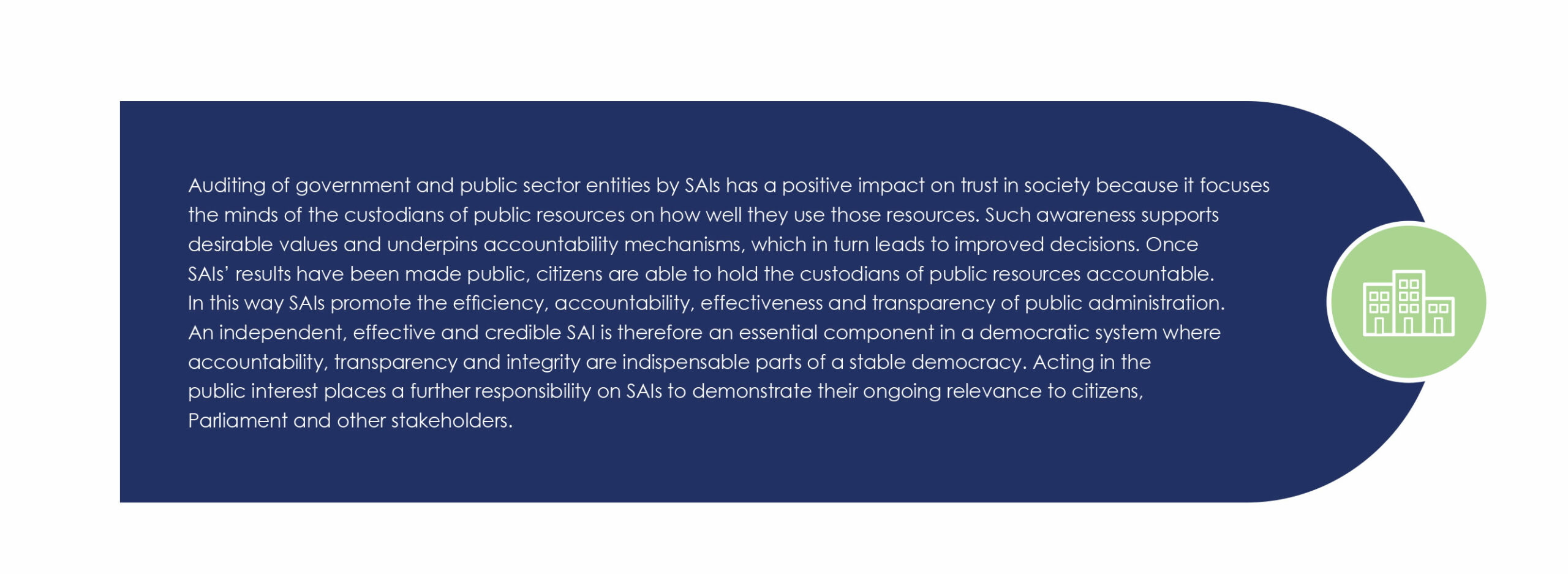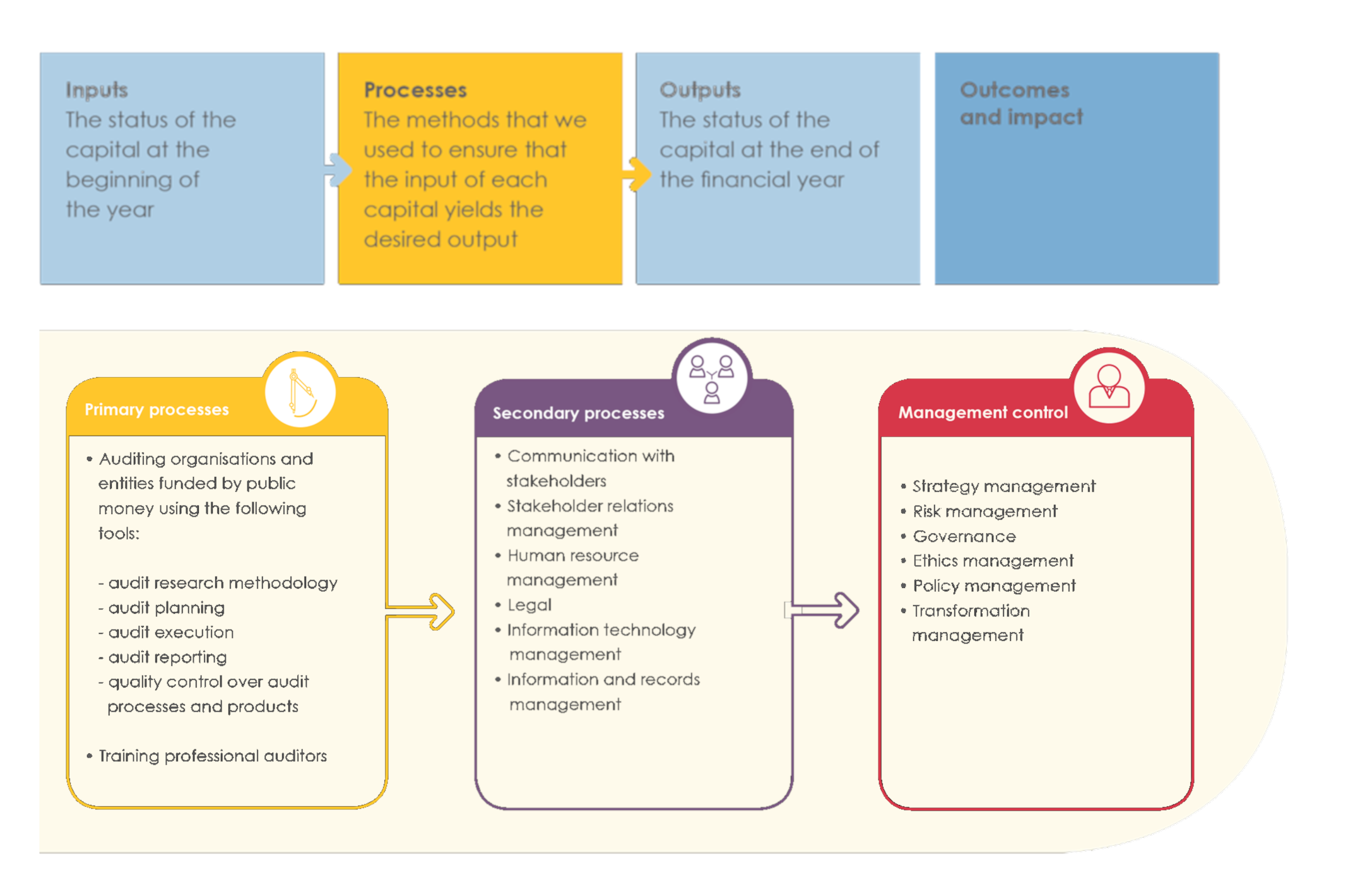





The AGSA’s #cultureshift2030 strategy
Our aspirations and the way we intend to achieve them are formulated in our call for action, our strategic manifesto.
Our strategic aspiration is that over the next six years we will make a stronger, more direct and consistent impact on the lived reality of ordinary South Africans by sustainably and efficiently shifting public sector culture through insight, influence and enforcement.
We envisage that by 2030, the AGSA will be associated with a meaningful and sustainable shift of public sector culture to one of performance, accountability, transparency and integrity.
Change and strategic priorities
Culture refers to our shared values and way of life – it reveals the fundamental values of society.
It goes beyond simple, occasional compliance with rules; it appreciates – and encourages – the outcomes for which the rules exist. From culture flows behaviour. To fundamentally influence behaviour, therefore, it is important to fundamentally change the underlying culture. It is the solidity of culture within the public sector that we believe will ultimately drive a sustained, consistent and meaningful improvement in the lived reality of South Africans.
We intend to sustainably and efficiently shift public sector culture through insight, influence and enforcement.

Our success is contingent on us excelling in the following dimensions in a coordinated manner:

Ultimately, success is a shift of critical mass to cultures characterised by performance, accountability, transparency and integrity, driven through partnerships in an accountability ecosystem of stakeholders willing to use their advocacy and influence to create meaningful improvements in the lived reality of ordinary South Africans.
Our performance against our strategy
Performance information




How we add value
Value and delivered to groups of stakeholders
The people of South Africa
- Listening to conversations in the public sector and civil society organisations on areas of importance, acting in the public interest, and selecting areas of audit that have a direct impact on the lived reality of our people
- Making public the results of our audit work and providing them in a simple manner, which may enable citizens to hold their elected representatives and custodians of public resources accountable
- Being a model organisation that champions clean administration and transformation imperatives
- Executing our audits in the most cost-effective, efficient and economical manner
The legislatures
- Being a trustworthy source of relevant, independent and objective insight based on professional judgement and sound analysis
- Proactively identifying themes, common findings, trends and root causes
- Providing audit recommendations and discussing these with key stakeholders to enable them to oversee and support beneficial changes in the public sector culture and service delivery so that we influence improvement in the lived reality of our people
- Enabling them to be a good custodian of the accountability ecosystem, strengthen their monitoring processes and intergovernmental relationships, and ensure appropriate and swift interventions for the people of South Africa
The executive and auditees
- Identifying instances of mismanagement and their root causes, and recommending improvements tailored to the business of the auditee
- Equipping them with a value-adding understanding of the status of their financial and performance management and compliance with relevant laws
- Delivering tailored audit and engagement programmes to assit them to improve their respective cultures so that they are characterised by performance, accountability, transparency and integrity
- Enabling them to bring about improvements in the audit outcomes of their portfolios by becoming more actively involved in key government matters, particularly those faced by state-owned enterprises and key service delivery portfolios
The auditing and accounting professions
- Allocating contract audit work equitably and meaningfully
- Building skilled and qualified professionals
- Creating a pipeline of black chartered accountants to transform the profession and economically empower black audit forms
Our employees
- Providing an invaluble opportunity to play a role in shaping the work of the public sector
- Creating meaningful employment and career development opportunities
- Providing fair, transparent, market-related and equitable remuneration and benefits
Value and benefits of supreme audit institutions
As a member of Intosai, we subscribe to the principles entrenched in Intosai-P 12, which describe how supreme audit institutions demonstrate their value and benefits to the public sector.
The goal of supreme audit institutions is to make a difference in the lives of ordinary citizens in their respective countries.
The overall philosophy of the standard centres around the following notion:


Business model
Section 36 of the PAA authorises the AGSA to access funding from multiple sources. These sources vary from our audit fees to money appropriated by Parliament, interest earned on investments, money obtained by alienation or letting of property and funds from any other source. The AGSA is legally authorised to accept donations and bequests if these will not result in a conflict of interest, and subject to a duty to disclose the donation or bequest in the annual report.
We are self-funded and derive our income by charging audit fees for the work required to complete an audit, based on publicly available, transparent and annually revised audit fees. A defined percentage of markup, or our sustainability margin, is used to maintain our operations.
Section 38(4) of the PAA authorises the AGSA to retain any surplus, or a portion of it, following consultation with the National Treasury and after approval by Scoag.
When approved, we use this surplus to fund our infrastructure (capital) expenditure and for working capital requirements to ensure our sustainability. Any portion of the surplus that Scoag does not approve for retention is paid into the National Revenue Fund. Our business model is geared towards generating value.
The term ‘capital’ used in the integrated reporting framework refers broadly to any store of value that we use to deliver our mandate. We depend on the various forms of capital for our success. Their availability, quality and affordability can affect our long-term viability and, therefore, our ability to create value. They must be maintained if we are to continue creating value in the future.

Business model summary

Our approach to funding has served us well since we formally adopted the funding model in 2009. However, the difficulty to collect outstanding fees from mostly local government and embattled SOEs increased due to the loss of revenue caused by the pandemic and other factors such as mismanagement, fraud, corruption and other forms of impropriety. We have heeded Scoag’s call to review our funding model to remain financially independent and have commenced our research in that respect.
Strategic risk
Our strategic risk profile represents the top risks faced by the organisation managed at executive level and overseen by the independent audit committee. These are the risks that could fundamentally hinder us from achieving our strategic objectives, hence they receive priority attention at the highest level
The implementation of the mitigations for the strategic risks identified in 2021-22 and 2022-23 was rigorously monitored over the year, periodically assessing the various risk indicators. We are satisfied with the efforts to mitigate risk and action that owners took to address risk exposure.
The residual mitigations are of a long-term nature as the strategic objectives extend beyond the performance period.
While we assess the movement of the risks continuously throughout the year, annually we hold a formal process of evaluation of the risks, considering all environmental factors that have the potential to impact the achievement of our ambitious #cultureshift2030 strategy.

Fundamentally, our strategic risk profle remained similar throughout the last few years. Mitigations tovthose risks have been in place since the 2021-22vfnancial year and as far as they remain relevant, we will continue with those actions. The strategic initiatives defned in the #cultureshift2030 strategy have been incorporated as mitigations, especially for risk 1 “failure to remain relevant and cause a positive impact through our product, insights or messages”
We have now identified the increase in cyber attacks on business globally to be applicable to us given our unrestricted access to our clients’ business and personal information.
Our approach to the risk mitigation is through both soft and hard controls. These include:
- continuously reviewing our IT security policy and
relevant procedures - technical staff training
- modernising our infrastructure
- enhancing security tools
- adopting ISO 27001
